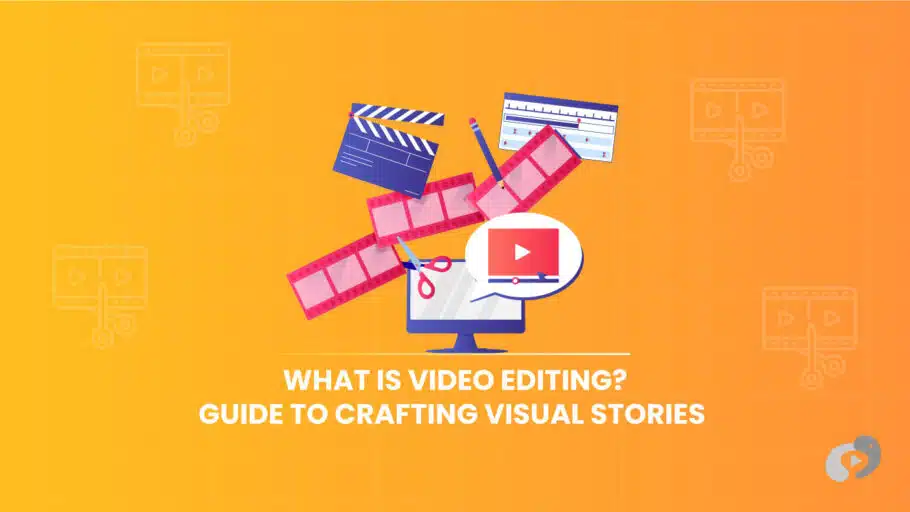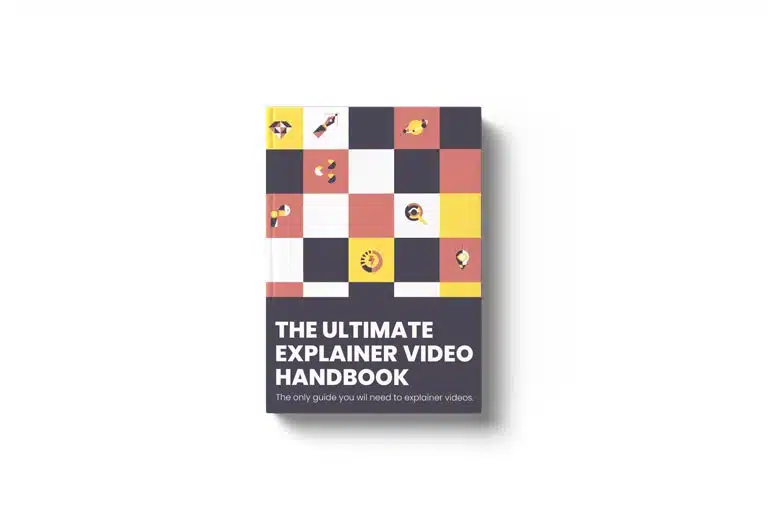Last Updated on August 28, 2024
Article Contents
Estimated reading time: 8 minutes
What is Video Editing?
Video editing is the process of manipulating and rearranging video shots to create a visual narrative or a story. This process includes cutting segments (trimming), re-sequencing clips, and adding transitions and other special effects. It is a crucial part of the post-production process in film making, television production, music video creation, startup video production, and online content production.
Video editing is vital in creating engaging content because it allows creators to tell a compelling story, enhance visual appeal, and keep viewers’ attention. Well-edited videos can convey messages more effectively, evoke emotions, and improve the overall viewing experience. Editing also provides the opportunity to refine pacing, ensure coherence, and implement creative elements that can set a piece apart. In a saturated digital landscape, quality editing can be the difference between content that stands out and content that gets overlooked.
What are the key concepts in video editing?
Understanding the key concepts in video editing is essential for anyone looking to produce high-quality videos. These foundational elements form the backbone of effective storytelling and can significantly impact your final product.
What is frame-rate in video editing?
Frame-rate, measured in frames per second (fps), is a crucial concept in video editing that determines how many individual frames or images appear in one second of video. It directly influences the fluidity and clarity of the motion depicted in the video. Common frame rates include 24fps, which is often used in film for a cinematic feel; 30fps, which is standard for television; and 60fps, which provides ultra-smooth motion and is frequently used in high-definition content and video games. Understanding and selecting the appropriate frame rate is essential for achieving the desired visual effect and ensuring the video meets the technical requirements of the intended platform.
Industries we serve
What is B-Roll in video editing?
B-Roll, often referred to as cutaway footage, is supplementary content used in video editing. For example, in a cooking video where the main shot shows a chef preparing a dish, B-Roll could include close-up shots of ingredients being chopped, the sizzle of food in a pan, or the finished meal being plated. This additional footage enhances the narrative, adds visual context, and makes the video more engaging for viewers. Properly utilizing B-Roll can elevate the overall quality and impact of the final production.
What is a LUT in video editing?
A LUT, or Look-Up Table, is a tool used in video editing to apply color grading quickly and consistently. It transforms the original color values of the video to new color values based on a predetermined formula, allowing editors to achieve a specific aesthetic or mood. LUTs are extensively used for color correction and to maintain visual consistency across different shots and scenes. By integrating LUTs, editors can save time while ensuring that the final video has a polished and professional look.
What is Rendering in video editing?
Rendering in video editing is the process of generating the final output file from the edited sequence of video clips, audio tracks, effects, and transitions. During rendering, the computer processes all the elements and layers in the project, converting them into a single, cohesive video file that can be played back on various devices. This step is crucial to ensure that all edits are applied correctly and that the video meets the desired format and quality standards. The rendering process can be time-consuming, depending on the complexity and size of the project.
What does non-linear video editing mean?
Non-linear video editing refers to a method that allows editors to access and manipulate any frame in a digital video clip without affecting the rest of the footage. Unlike linear editing, which requires sequential access, non-linear editing provides greater flexibility and efficiency. This allows editors to experiment with different sequences, apply effects, and make changes without permanently altering the original media. This non-destructive approach is particularly advantageous for creative editing and iterative workflows, significantly enhancing the editing process.
What is a video editing software? What are its applications?
Video editing software allows users to manipulate and arrange video footage to create a polished final product. These applications enable editors to cut, trim, and splice clips, add transitions, audio tracks, special effects, and titles, and adjust color and exposure. The primary role of video editing software is to provide a comprehensive toolkit that streamlines and enhances the creative workflow, ensuring the final video meets the intended vision and professional standards. Some popular examples include Adobe Premiere Pro, Final Cut Pro, and DaVinci Resolve.
Features to Look for in Video Editing Software
- User Interface: A clean and intuitive interface is essential for efficient editing. Look for software with a user-friendly layout that allows easy access to tools and features.
- Multi-track Timeline: This feature enables the layering of video clips, audio, and effects, allowing for more complex and creative editing.
- Video and Audio Effects: Comprehensive effects libraries that include transitions, filters, and audio processing tools can greatly enhance the production quality.
- Color Correction and Grading Tools: These tools are vital for adjusting the visual tone and consistency of the footage, ensuring a polished final product.
- Support for Various File Formats: Software that supports a wide range of video and audio file formats ensures compatibility with different media sources and output requirements.
- Export Options: Look for flexible export settings that allow for output in various resolutions and file types, suitable for diverse platforms and devices.
- Performance and Stability: Efficient software that can handle high-definition video and complex projects without frequent crashes is crucial for a smooth editing experience.
- Collaboration Features: Tools that enable multiple users to work on the same project can enhance teamwork and streamline the editing process for larger productions.
- Regular Updates and Support: Continuous development and reliable customer support are important for keeping the software current with industry standards and addressing any issues promptly.
- Affordability: While professional-grade editing software can be expensive, there are also more affordable options available with comparable features. Consider your budget and choose a software that meets your needs without breaking the bank.
- Trial Versions: Many editing software offer free trial versions to test out their features before making a purchase. Take advantage of these trials to see which software best suits your editing style and workflow.
What are some advanced techniques in video editing?
Mastering advanced techniques in video editing can significantly elevate the quality and impact of your projects. These techniques go beyond basic cuts and transitions, allowing editors to create more dynamic and engaging content.
Color Grading and Correction
Color grading and correction are advanced techniques that enhance the visual aesthetics of a video. Color correction involves adjusting the colors to ensure consistency and natural appearance across all shots. On the other hand, color grading is a creative process that gives the video a specific look or mood, effectively telling a story through hues and tones. Mastering these techniques can dramatically improve the quality of your video, making it more engaging and visually appealing.
Audio Editing and Mixing
Audio editing and mixing are crucial techniques in video production that ensure clarity and cohesiveness of sound. This involves synchronizing audio with visuals, reducing noise, balancing sound levels, and adding effects or music to enhance the narrative. Proper audio editing can significantly impact the viewing experience, making the dialogue crisp and the background score harmonious. Investing time in mastering audio editing tools is essential for any video editor aiming to produce professional-quality work.
Special Effects and Transitions
Special effects and transitions are powerful tools that can add a dynamic element to your videos. Special effects include animations, CGI, and compositing techniques that create visuals which cannot be captured with a camera alone. Transitions, such as fades, wipes, and cuts, help to seamlessly connect scenes, guiding the viewer’s attention and enhancing the narrative flow. Mastering these techniques allows editors to produce captivating and professional-looking videos that stand out.
What are the practical applications of video editing
Video editing is a versatile skill with a multitude of practical applications across different industries. From creating compelling marketing content to producing educational materials, the possibilities are endless for those proficient in video editing techniques.
Video Editing in Different Industries
Video editing is a versatile skill applicable across various industries:
Entertainment Industry: Essential for creating movies, TV shows, and web series, shaping raw footage into captivating stories.
Advertising Industry: Crucial for producing engaging commercials and branded content to capture consumer attention.
Corporate World: Vital for creating training videos, promotional material, and internal communications to effectively convey a company’s message.
Education Sector: Enhances the learning experience by creating instructional videos, tutorials, and e-learning courses.
Social Media: Influencers and content creators rely on it to produce polished and compelling content in a crowded digital landscape.
News and Journalism: Helps in compiling news stories and documentaries, informing and engaging the audience.
Event Industry: Used to create highlight reels and promotional videos for events, ensuring lasting memories for participants.
Effective video editing distinguishes content, making it more compelling and professional. Proficiency in video editing opens up numerous opportunities, underscoring its importance in today’s digital age.
The Power of Video Editing in Storytelling
This guide has explored the significance of video editing in various industries, from entertainment and advertising to education and social media. We’ve highlighted how effective video editing can transform raw footage into engaging and polished narratives, enhancing storytelling and communication. Essential tools and techniques such as cutting, trimming, color correction, and adding transitions and effects were discussed, emphasizing their role in producing professional-quality videos. Mastering these skills and utilizing industry-standard software can open up vast opportunities, making video editing an invaluable asset in the digital era. For those seeking professional assistance, video production services in India offer a wide range of expertise to help create high-quality content.

